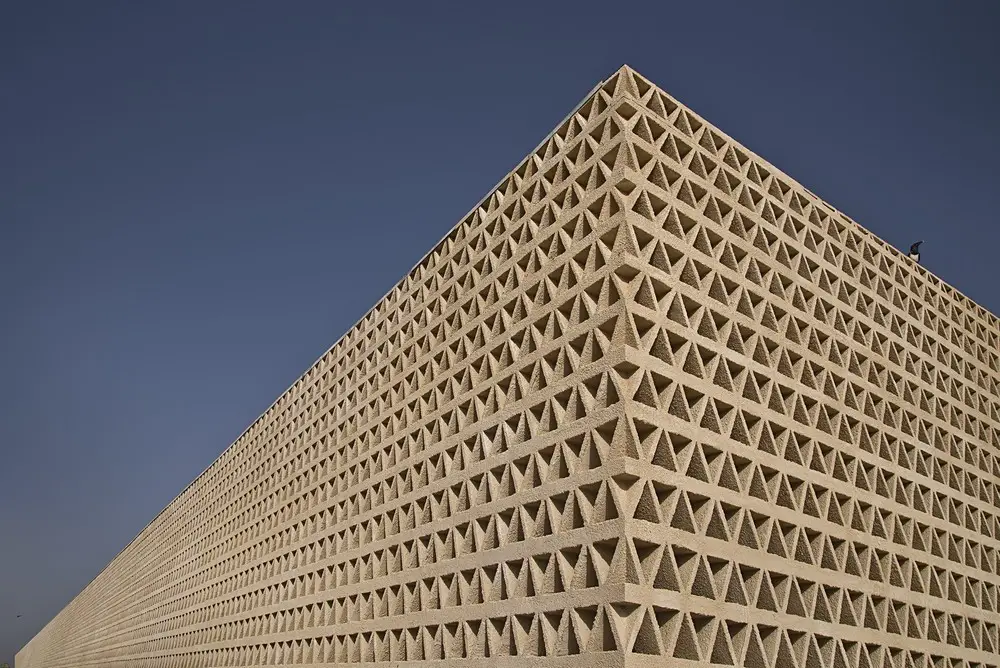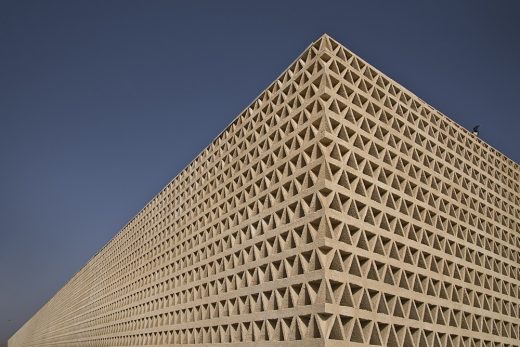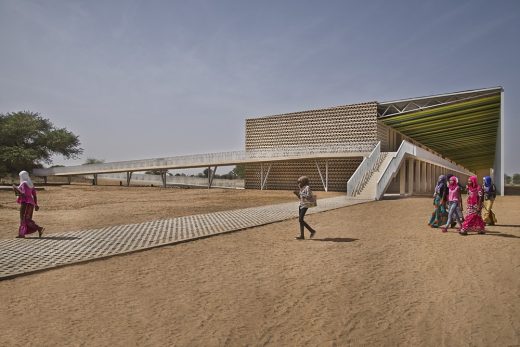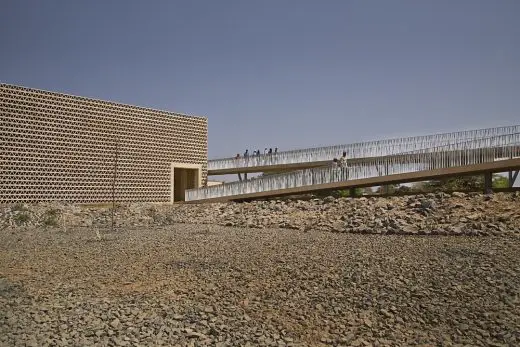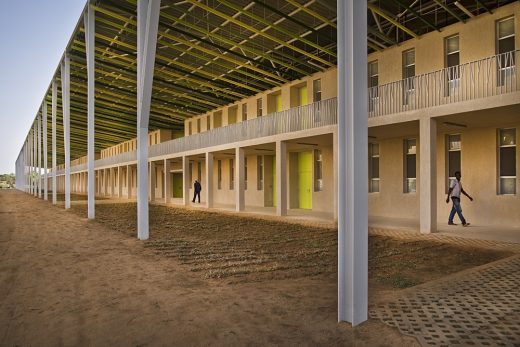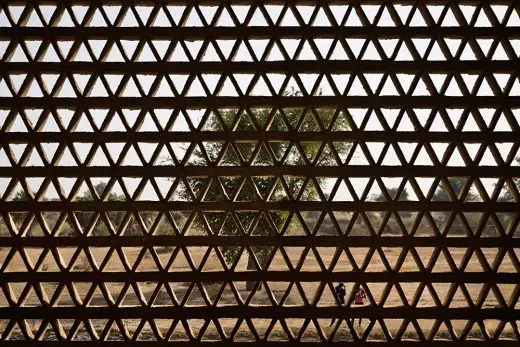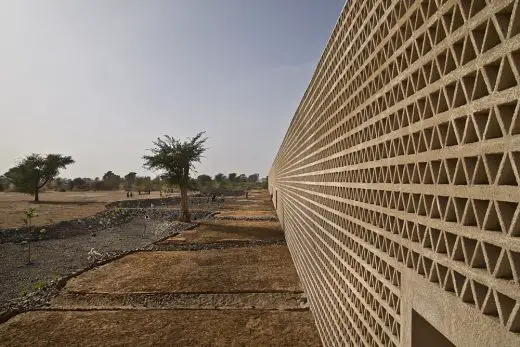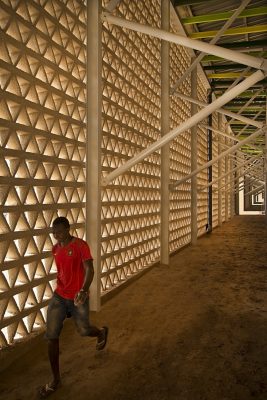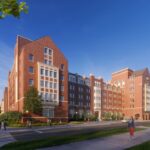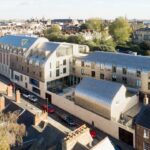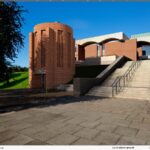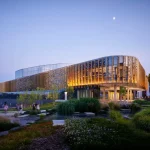University of Bambey Building, Diourbel, Senegal Architecture, West African Images
University of Bambey Building, Senegal, Africa
15 July 2020
Design: IDOM
Location: University of Bambey Building, Diourbel, Senegal, West Africa
University of Bambey Building, Diourbel, Senegal, Africa
In Senegal, shade and water are everything. This lecture-room block project, a close relative of another in Gaston Berger, San Luis, which was commissioned by the Ministry of Education and the World Bank, is set in the city of Bambey, located 120 km west of Dakar. With a population of 20,000, Bambey stands out for its peanut and cattle farming, its scarce urban infrastructures and the surrounding harsh life conditions.
The University of Bambey is around 5 km away from the metropolitan area, occupying an area of 64 Ha and catering for 2,000 students. Its buildings, erected between 2004 and 2007, have seen their capacity reduced due to the growing numbers of the student body. Therefore, the extension project was calculated for 1,500 students, with lecture rooms for 50 and 100 people, a 500 seat lecture hall, laboratories, computer rooms and offices for the teaching body, all distributed over an enclosed built-up area of 4,200 m2 and 11,500 m2 of urbanized area.
The project aims to respond to this context as a perfect machine, beautiful in its efficiency and without an engine. We found inspiration on campus by reproducing a great tree as a contributor of shelter, which would offer shade, coolness and comfort to its users without energy consumption.
We developed the project from its cross-section, providing the building with a large double roof and a great lattice on the south façade, an L-shaped shield laying on its back, which avoids direct solar radiation but is permeable to air. This shield creates a Venturi effect generating a constant air flow between the building envelope and the lecture rooms, reducing the interior temperature by 10-15 ºC degrees, a change from the outside 40-45 ºC.
The building is both simple and repetitive in its construction, of a scale commensurate to the campus, very practical and integrated into the environment whilst generating optimal conditions for protection against the extreme climate. The roof is like a double skin supported by steel lattice beams: a metal sandwich panel with insulation on top, as a first barrier against heat and solar radiation, and a dropped ceiling of mineralised fibres on the inside, generating two layers with ventilation between them.
For the south façade, we created a large latticework, permeable to air, which eliminates any solar incidence towards the interior and acts as a great filter of solar radiation, extreme in this environment, but still allowing enough light through for the interior functional needs. We planted citronella grass in the cavity between the two skins to avoid the presence of malaria-bearing mosquitoes and to freshen up the space. Complementary, the roof is extended into a 10 meter long canopy, covering a wide exterior area, sheltering students when not in class.
The combination of the double roof and the double-skin façade, having 1 and 3 meter cavities respectively, makes it possible to create a breeze: the heat concentrated on the outer skin of the façade ends up flowing under the roof, eased by the inclination of the latter. This system allows for a high percentage of outside heat to be dissipated while at the same time generating a constant flow of air through the cavity of the building’s envelope.
To solve the lack of sewage and rainwater networks, we incorporated infiltration rafts with vegetation that collect rainwater by means of different-sized basalt-lined exterior canals. These retain sediments and reduce the speed of the water. The rafts can be interconnected in the event of saturation and are laid out in keeping with the surroundings as a natural meander, favouring the natural development conditions of native vegetation.
A purification system by means of activated sludge allows the purification of waste waters, which, once purified, are discharged to the same rafts. The used sludge will be reused as agricultural fertilizer.
Lastly, we wanted the project to be sensitive to the social component. For this purpose, we designed a façade made up of blocks with triangular perforations that could be prefabricated in situ by the local workforce. And so, the 20,000 concrete pieces, similar in size to a conventional concrete block, were built manually on site by means of a stainless steel mould and then air-dried. The construction of the 2,000 m2 of the south elevation lattice employed over a hundred workers from Bambey for 6 months.
University of Bambey, Diourbel, Senegal, Africa – Building Information
• Full name of the project:
New Lecture Room Block At The Alioune Diop University
• Location Data (Country, City, Street, Etc.):
Bambey, Boite Postale 30. Diourbel Region. Senegal
• Office/studio:
Idom
• Author’s Full Name And Date Of Birth
Javier Perez Uribarri, 12-04-1968 (Idom)
Federico Pardos Auber, 19-06-1970 (Idom)
• Commission Director / Project Management
Federico Pardos Auber
• Collaborators
• Collaborating Architects (Idom):
Beatriz San Salvador Pico
• Other Collaborators:
• Costs (IDOM)
Ana Robles, building engineer (costs)
Joseba Andoni, building engineer (costs)
• Site supervision:
Federico Pardos
• Construction supervision
Papa Djibril Kane, building engineer, site supervision (Senegal)
Fally Diop, building engineer, site supervision (Senegal)
New Diourbel Building Design Team
• Other professionals (IDOM)
Miguel Angel Corcuera, structural engineer
Fernando López, structural engineer
Francisco José Sánchez, building services engineer
Arturo Cabo, building services engineer
Blas Beristain, energy efficiency and sustainability architect
Iñaki Zabala, chief project draughtsman
Fernández de Gamboa, 3D computer graphics
Alfonso Alvarez, 3D computer graphics
• Other independent professionals (Senegal)
Alioune Sow, Senegalese architect, Cabinet d’Architecture Alioune Sow, Dakar. Senegal (CAAS).
Tandakha Ndiaye, engineer (Bureau d’Etudes OPTIMA). Dakar (Senegal)
ALPAGES (Bureau de Contrôle Technique). Dakar (Senegal)
• Developer / Ownership / Institution
Developer: Government Of Senegal – Ministry Of Higher Education Of Senegal (Mesr) – Public Buildings Construction Agency (Acbep) – World Bank (Wb), Financing Corporation
Ownership / Institution: Alioune Diop University Of Bambey (Uadb)
• Photographer
Francesco Pinton
• Construction Company
Cse, Compagnie Sahelienne D’entreprises. Dakar, Senegal.
• Construction Cost (National currency / US dollars / Euros)
3,931,758,657 F CFA HTVA / 5,993,927 EUROS HT/ $ USA 4,900,162
• Cost/m2 (Construction cost)/m2
796 EUROS /M2 (including 5,000 m2 of urbanization)
• Built-up area
7,533 M2
• Project date / Project timeframe
2012-2013 / 12 months
• Construction finalisation date / construction timeframe
13-12-2017 / 24 months
University of Bambey Building, Diourbel, Senegal, West Africa images / information received 140720
Location: Dakar, Senegal, Africa
Senegal Buildings
House in Dakar
Design: SAOTA – Stefan Antoni Olmesdahl Truen Architects and Antoni Associates
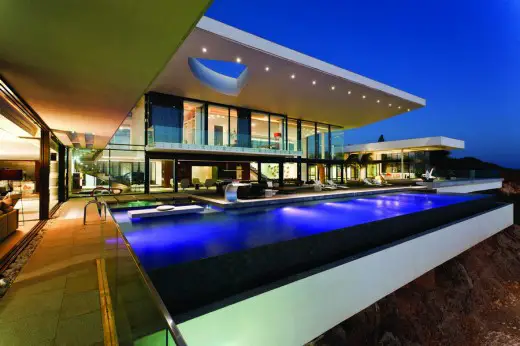
image from architects
Senegal Property
Dakar Railway Station
Project Consultancy: Iglo Architects
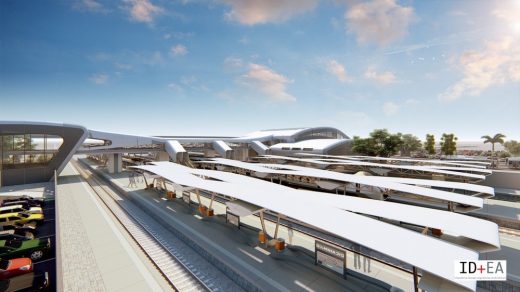
image from architects
Dakar Railway Station
Radisson Blu Hotel in Dakar
Design: SAOTA – Stefan Antoni Olmesdahl Truen Architects and Antoni Associates
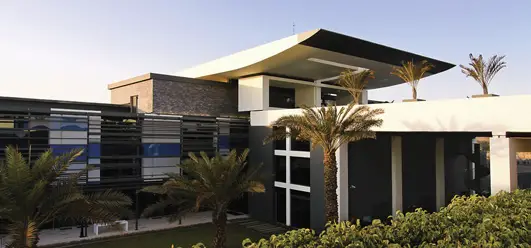
photo from architecture office
Senegal Hotel Building
Solar Well, Sambacounda village, Senegal, Africa
Design: Raoul Vecchio Architect
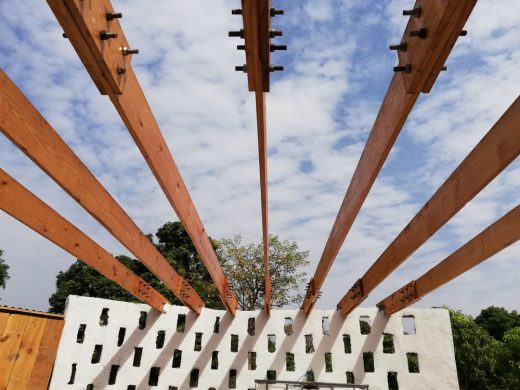
picture from architects practice
Solar Well in Senegal
Another Senegal architecture contest on e-architect:
Disappearing Vernacular African Architecture
Article: Jon Twingi Sojkowski
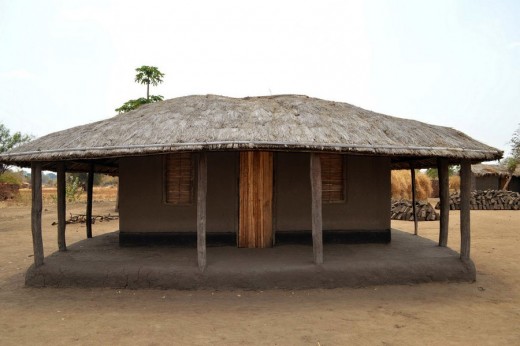
Verandah wraps around a home Penganga village
Vernacular African Architecture
African Buildings
Africa Architectural Projects
Another west African building on e-architect:
University of The Gambia – New Campus
Design: Snøhetta, Norway
University of The Gambia Buildings
Comments / photos for the University of Bambey Building, Diourbel, Senegal, West Africa page welcome

